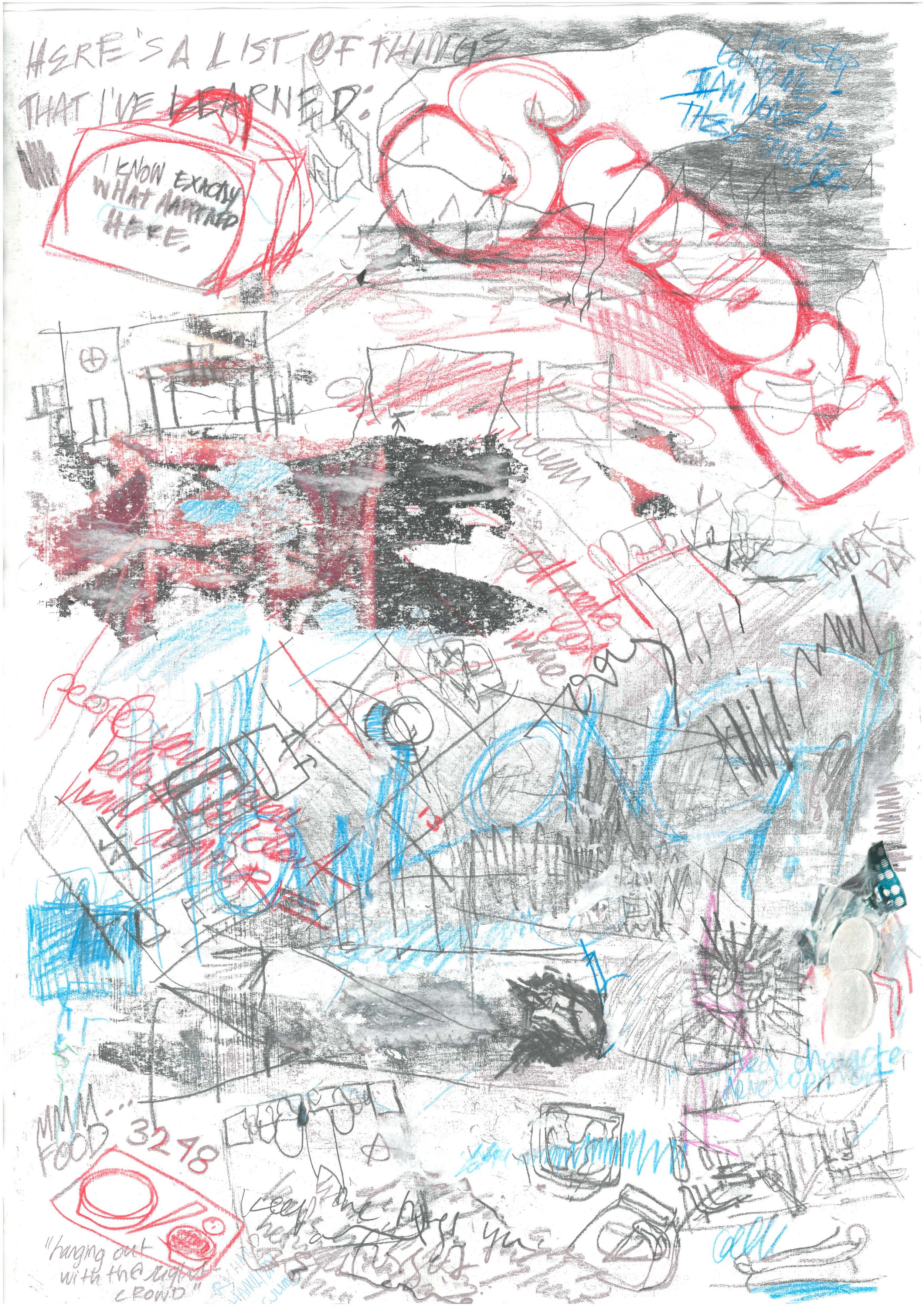





Cities are full of rooms: rooms in buildings, rooms made by buildings; rooms full of people and people’s things and also nothing; my thoughts, your thoughts, and exchanges of our thoughts and things. How do we remember all of these exchanges, all of these interactions? How can we trust that what we do remember actually happened?
[I] The Start: a Drawing
Derived from my first notes and images on a walk between Trajan’s Market and Piazza della Quercia, my first Book of Things depicts a vibrant city scene framing a public or central space. A collection of buildings, walls, tables, and stairs all fall off the page; the city and the drawing continue elsewhere.
[II] Extracting Memories
My mind was paused on a 3’ x 6’ still. The Book of Things was full of incidental scenes, but where did they come from? It all had to come from somewhere, even if it wasn’t experienced in Rome -- even if I didn’t actually experience it. I cut the page and folded it into a book; flip two drawn, two blank. There I documented stories and drew plans, axons, and sections with gesso, paints, and brushes; with rulers, pencils and right angles. I expanded upon found memories and fabricated new ones.
[III] New City, New Perspectives
The languages of drawing are complicated; things can be lost in translation (although more often things are found). In this process of translating, I found myself asking: What is a line? What is perspective? How do I misread what I represented previously and also understand how I misread before?
Now I find myself in a room within a city: my City of/ from Memories. A piazza framed by scaleless and distorted walls, buildings, stairs, and mundane things. To the left, a massive table expanding into a thin roof, to the right an inverted church intersecting a rounded courtyard. A city simultaneously of the past and the present and the possible future; a future consisting of inverted rooms; what's left of what isn't there.

